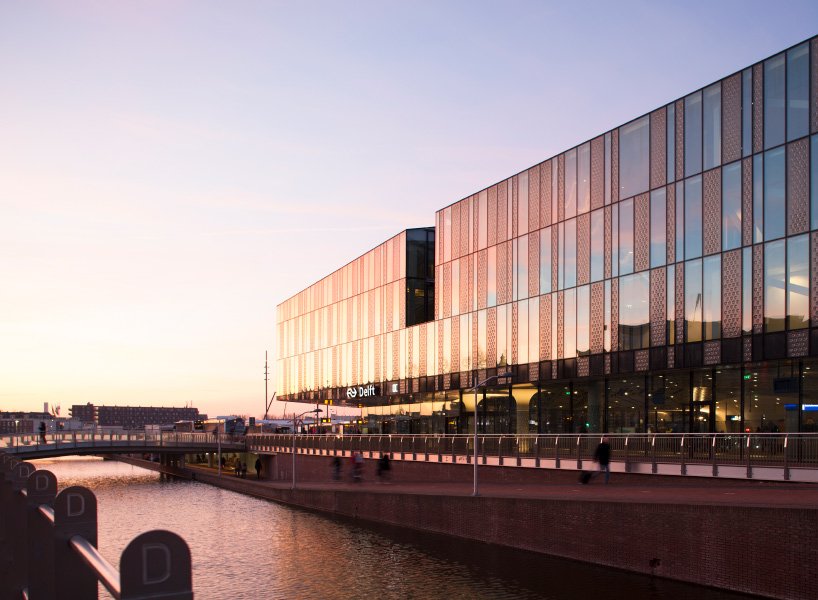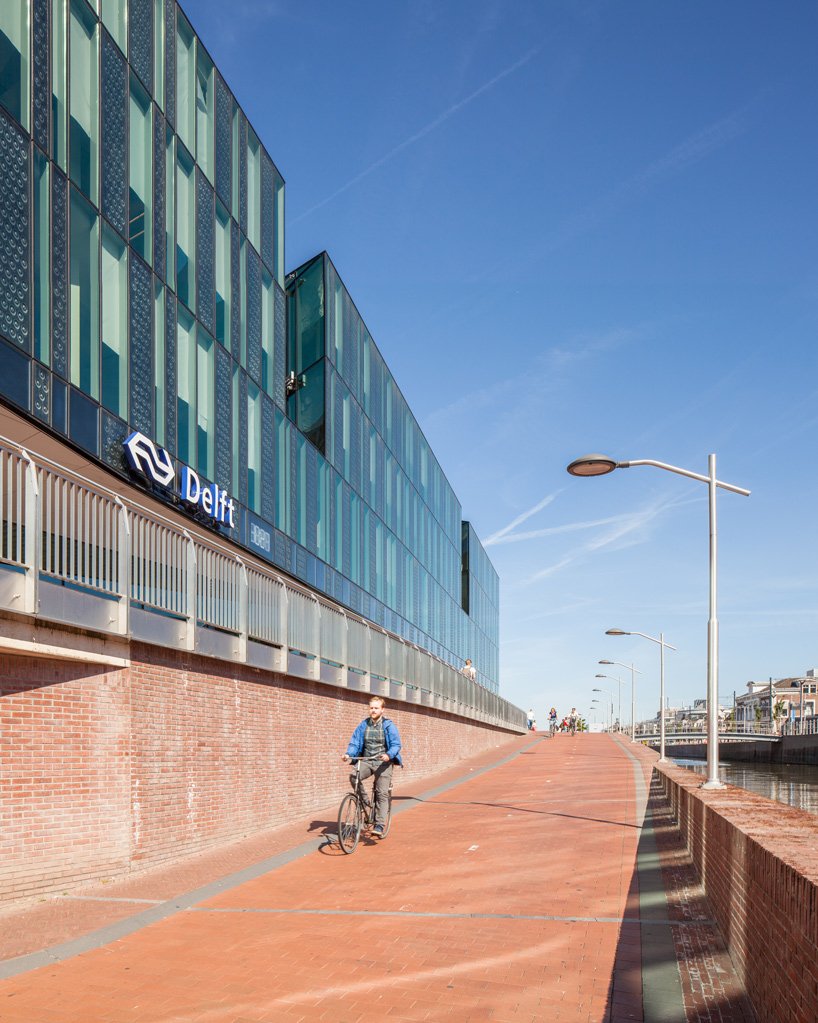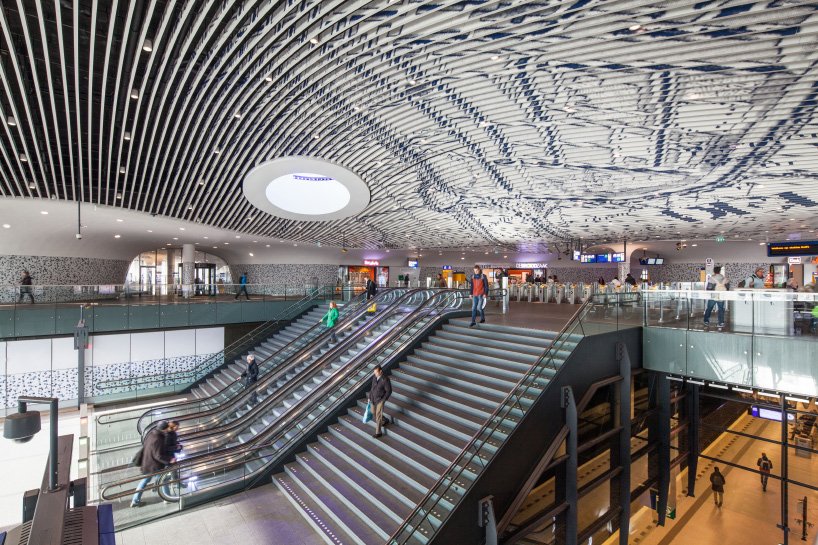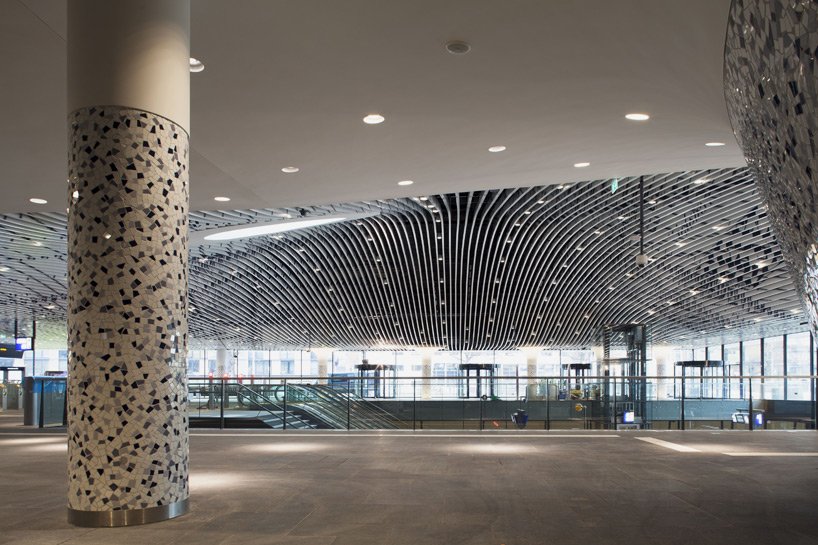Arriving in Delft is an unforgettable experience. Travelers are welcomed with a scaled map of the Dutch city in 1877, rendered in shades of blue and white, and columns dressed in a mosaic of blue Delft tiles. When you look outside, the city and the old station combine to form a contemporary version of “View of Delft” by Johannes Vermeer. No wonder visitors remain gobsmacked as they walk through the new train station and city hall to get into the city.

Courtesy of Mecanoo
Mecanoo’s Train station and the City hall complex in Delft, Netherlands was finally completed after 9 years. 80% of the station was opened in 2015, but the rest have been under construction since then. 2017 saw the entire project finished. The station and the new city hall sit above a new train tunnel. The old concrete viaduct that divided the city into two since 1965 has been replaced by the new tunnel. The station platforms have been designed by the Dutch practice – Benthem Crouwel.

Courtesy of Mecanoo
Read also:
- Mecanoo Releases “Fly Thru” Video of Modernized MLK Memorial Library in Washington DC
- Global Headquarters Building of China Merchants Bank | Mecanoo
- Hilton Hotel Schiphol Airport | Mecanoo
According to Mecanoo, “the character of Delft and the combination of past and future was the starting point in the development of the design. This town of historic buildings and canals, once known as the ‘Prinsenstad’ and deeply connected to the Dutch Royal Family, is now at the forefront of technical development. The Technical University of Delft, which has one of Europe’s top architecture schools, is a world-leader in engineering innovation.”
Bathed in blue
The station’s ceiling has the map of Delft and its surroundings and the walls and columns decorated with the Delft blue tiles. On the exterior, the glass skin of the building reflects the Dutch skies. The vernacular window design, seen throughout the historic city has been represented as panels of fused glass with spheres. The open panels of high-performance glass and the closed fused panels of glass together create high energy efficiency.

Courtesy of Mecanoo
Sustainable
Mecanoo designed the facade of the city hall and train station, to respond to the sun’s orientation at different times of the day and season. They took into consideration the daylight that was needed in the building but ensured that it would reduce heat gains in the summer. It helped determine the amount of glass incorporated into the building. The glass has a low solar absorption but high light absorption. Moreover, the windows can be opened manually, increasing human comfort and natural ventilation. There are solar panels on the roof which provide 20% of the energy for the building. Moreover, it has a presence aware of lighting. The GreenCalc+ score is at 270.
The past and the future
With the multitude of historic buildings and canals, the world-famous Delftware ceramics, and the Prinsenstad city, Delft reflects its past. The Delft University of Technology is the future of the city – being at the forefront of technical innovation. The past and future of Delft are represented in the building.

Courtesy of Mecanoo
Compact and contextually relevant
The design process has yielded a building volume that is highly efficient. The lowered roof corners slowly transition to the existing development on the Wester Quater and the Delft city center. This structure connects the historic city on the east side of the tunnel with the residential neighborhoods on the west. Moreover, inspired by the intricate roadways of Delft, City Hall’s glass volume has a detailed pattern of alleyways and courtyards.

